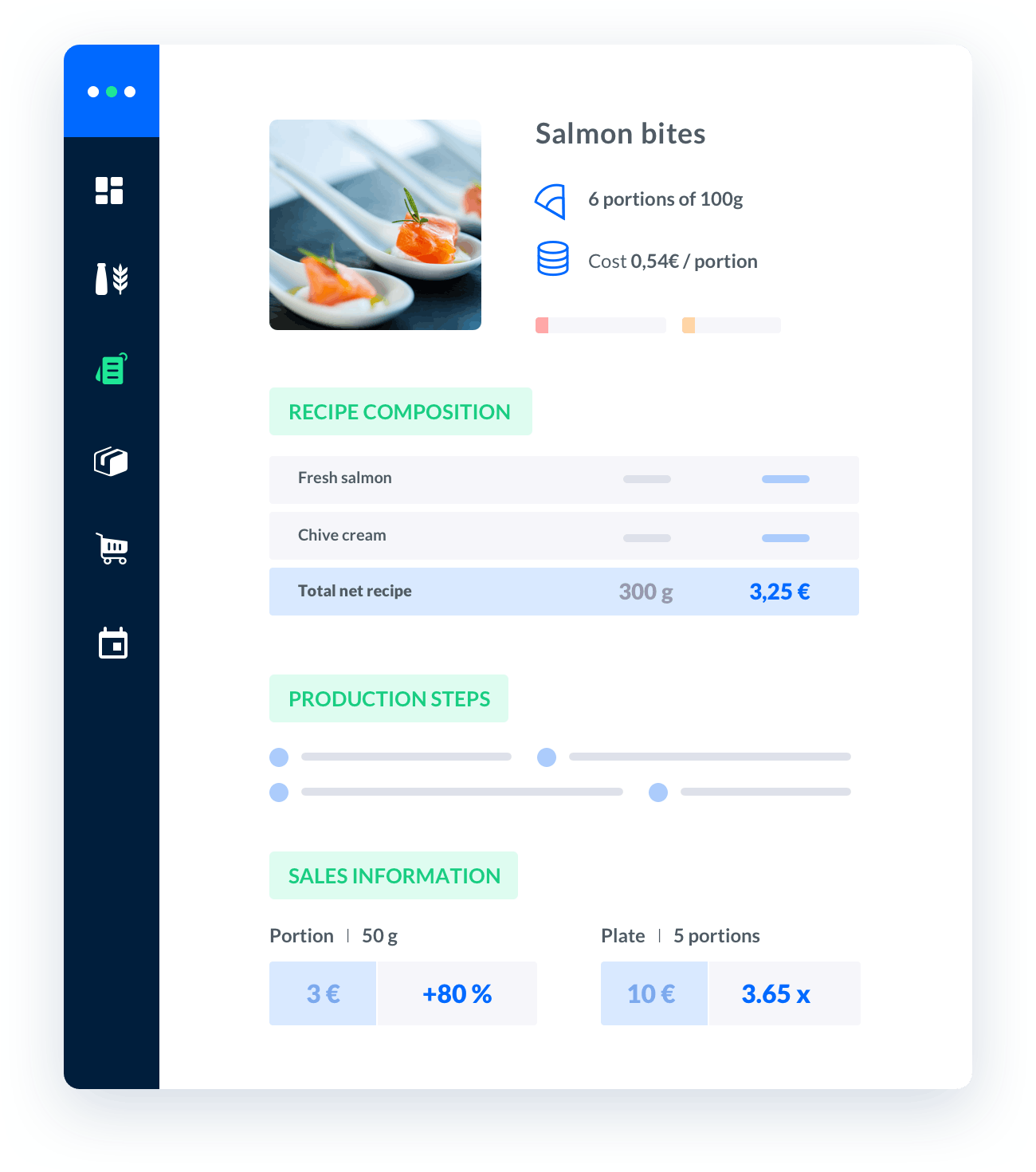cost per serving calculator
When it comes to calculating the cost per serving for your catering business, it is essential to have a precise understanding of your expenses and the quantity of servings you can expect from a particular recipe or dish.This allows you to determine the profitability of your menu items and make informed decisions about pricing and portion sizes.

Melba: the food cost app to optimize the profitability of your restaurant
Discover how to optimize the profitability of your restaurant with melba

The ultimate guide to food cost restaurant
Learn more about the food cost basis and how to reduce your food cost percentage
When it comes to calculating the cost per serving for your catering business, it is essential to have a precise understanding of your expenses and the quantity of servings you can expect from a particular recipe or dish. This allows you to determine the profitability of your menu items and make informed decisions about pricing and portion sizes. In this article, we will delve into the details of how to calculate the cost per serving, providing you with valuable insights and practical tips to optimize your catering operations.
Understanding Cost per Serving
Cost per serving is a vital metric that helps catering professionals determine the actual expenditure incurred for each serving of a dish. It takes into account various factors such as ingredient costs, labor expenses, overheads, and desired profit margins. By calculating the cost per serving accurately, you can ensure that your pricing strategy aligns with your business goals while maintaining profitability.
Factors Affecting Cost per Serving
Several factors contribute to the cost per serving. It is crucial to consider these elements when calculating the cost to obtain accurate results. Here are three key factors:
- Ingredient Costs: The cost of ingredients forms a significant part of the cost per serving. It includes the price of raw materials, such as meat, vegetables, grains, spices, and other components used in the recipe. Accurately tracking and updating ingredient costs is essential for precise calculations.
- Labor Expenses: Labor costs encompass the wages or salaries of your kitchen staff involved in the preparation, cooking, and plating of the dish. Calculating the labor expenses per serving allows you to understand the impact of personnel costs on your overall profitability.
- Overheads: Overheads consist of various indirect costs associated with running a catering business. These may include rent, utilities, insurance, marketing expenses, and other administrative costs. Allocating a portion of these expenses to each serving helps determine the true cost per dish.
Calculating the Cost per Serving
To calculate the cost per serving accurately, you need to gather detailed information about your ingredients, labor expenses, and overheads. Once you have this data at hand, follow the steps below:
Step 1: Determine Ingredient Costs
Begin by calculating the cost of each ingredient used in the recipe. Consider the quantity of each ingredient required and its corresponding price. Sum up the costs of all the ingredients to obtain the total ingredient cost.
Step 2: Calculate Labor Expenses
Next, calculate the labor expenses associated with preparing the dish. Take into account the time spent by each kitchen staff member involved, their hourly wages, and any additional costs such as benefits or taxes. Multiply the total time spent by the appropriate hourly rate to determine the labor expenses.
Step 3: Allocate Overheads
Allocate a portion of your overhead costs to each serving. This can be done by determining the percentage of total overheads that can be attributed to the specific dish. Divide the total overhead costs by the number of servings to obtain the overhead cost per serving.
Step 4: Calculate Total Cost per Serving
Finally, add up the ingredient costs, labor expenses, and allocated overheads to obtain the total cost per serving. This figure represents the actual expenditure required to produce and serve one portion of the dish.
The Importance of Accurate Cost per Serving Calculation
Understanding the cost per serving is critical for several reasons:
- Pricing Strategy: Accurate cost calculation helps you set appropriate prices for your menu items, ensuring they cover all expenses and generate desired profit margins.
- Menu Optimization: By analyzing the cost per serving, you can identify high-cost dishes that may need adjustments to improve profitability. This allows you to optimize your menu and offer a balanced selection of profitable items.
- Profitability Analysis: Calculating the cost per serving enables you to assess the profitability of your catering business as a whole and make informed decisions about cost control and revenue generation.
Conclusion
Calculating the cost per serving is a fundamental aspect of running a successful catering business. It provides valuable insights into your expenses, profitability, and pricing strategy. By accurately determining the cost per serving, you can optimize your menu, make informed business decisions, and ensure the long-term success of your catering operations.






